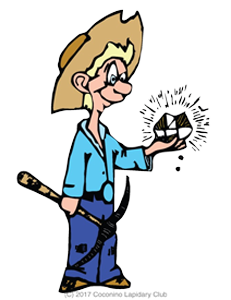In some minerals color is directly related to a metallic element, is characteristic, and can be useful in identification. As examples, azurite as shown in Figure 1A, is always blue due to the presence of copper, and rhodochrosite, shown in Figure 1B, is always pink to red due to the presence of manganese,. However minerals such as fluorite, colorless in it self, can be yellow, blue, purple, or green due to low concentrations of metal impurities.
Diamonds
USE OF COLOR IN MINERAL IDENTIFICATION
Diamonds IV
Lattice Defects, Impurities and Color As stated in references 17, 18 of my DIAMONDS II blog, impurity atoms and lattice vacancy defects are responsible for the coloration of diamonds [Ref 1]. A lattice vacancy (V) without a carbon atom in the diamond lattice which partners with one to four neighboring nitrogen atoms (N), in colored diamonds,. . . Read More
Diamonds III
A Gallery of Natural Diamond Crystals The gallery includes clear crystals and those exhibiting a range of colors (Figures 2-13), a range of shapes (Figures 2-15), examples of inclusions found in Diamonds (Figures 1-3), examples of shaping and etching by resorption (Figures 3-15), and examples of twinned diamonds (Figures-14,15). Well-developed crystal forms, typical of diamonds, are. . . Read More
Diamonds II
In this blog, my second on diamonds, I’ll discuss the physical and chemical properties of a diamond, then its optical properties in relation to its crystal structure and chemistry, and then their formation and associated geology. CRYSTAL STRUCTURE AND PROPERTIES OF DIAMOND To understand the physical properties of the diamond it’s important to understand its. . . Read More
Diamonds I
Having greatly enjoyed writing my last blogs on garnets as gemstones and mineral specimens, topics different from my long-time interests in the ore-forming minerals, I am starting a series of blogs in the same vein on the precious gems: diamonds, emeralds, rubies, and sapphires. In the first three blogs the topic is diamonds. In this first. . . Read More
